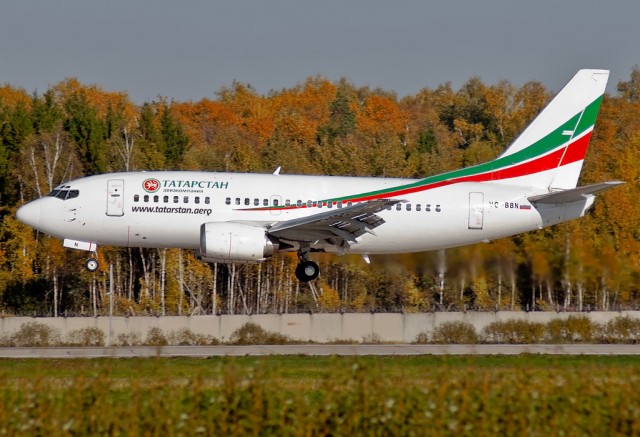
This is the Boeing 737-500 (VQ-BBN) involved in the flight 363 crash. Image: Osdu / Flickr
Earlier today, a Tatarstan Airlines’ Boeing 737-500 (reg VQ-BBN) crashed in the city of Kazan, killing all on-board. Flight 363, which took off from Moscow’s Domodedovo International Airport (DME) and was heading to Kazan International Airport (KZN), had 44 passengers and six flight crew.
A Russia’s Investigative Committee said in a release that the plane, “hit the runway and burst into flames.” The aircraft aborted one landing attempt and then crashed during the second. At this time, it is unknown what caused the crash and why the first landing attempt was aborted.
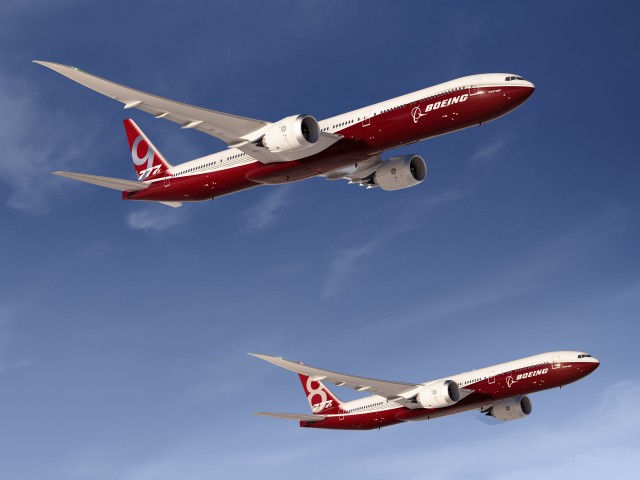
Just-launched Boeing 777-8X & 777-9X, ordered in record numbers at the Dubai Airshow – Image: Boeing
The first day of the 2013 Dubai Airshow kicked off with a bang. As we slept, Boeing racked up 225 new orders for their newly-launched 777X program. With the existing 34 orders from Lufthansa, the official launch of the plane comes with huge order support from customers. “We are proud to partner with each of these esteemed airlines to launch the 777X ’“ the largest and most-efficient twin-engine jetliner in the world,” said Boeing Commercial Airplanes President and CEO Ray Conner. “Its ground-breaking engine technologies and all-new composite wing will deliver unsurpassed value and growth potential to our customers.”
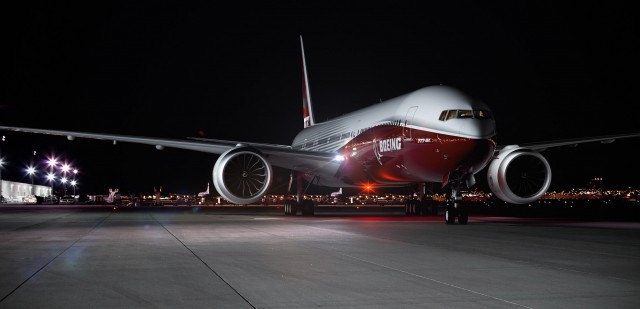
Night-time rendering of Boeing 777-9X – Image: Boeing
The 777X program wasn’t the only Day One winner for Boeing, however. Etihad also booked orders for 30 787-10s, which brings their total Dreamliner orders up to 71 – making them the largest airline customer for the 787 and pushing the program over 1,000 orders. Mideast short-haul carrier flydubai also made an order for 100 Boeing 737 MAX8 birds.
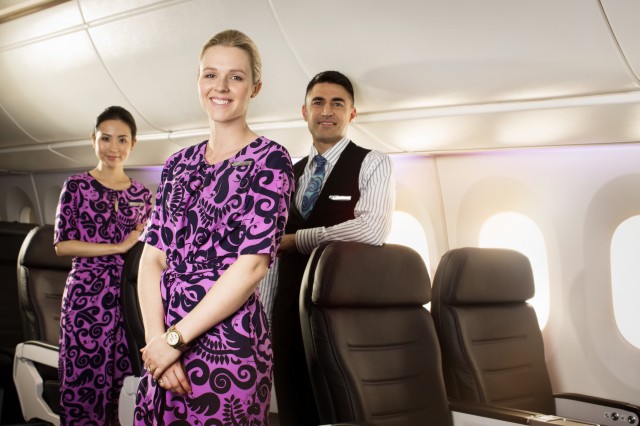
Air New Zealand flight crew aboard a Boeing 787-9 Dreamliner mock-up – Photo: Air New Zealand
Air New Zealand has been very patient, waiting for delivery of the very first Boeing 787-9 Dreamliner, the stretched version of the currently-flying 787-8. We have been watching closely as the first 787-9 rolled out of paint and then took its maiden flight. The airline still has a while until they take delivery sometime in the middle of 2014, but they are starting to get excited and want to share it with the world.
As of now, Air New Zealand is rolling out some of the details of their Dreamliner interior, as well as what routes the new aircraft will fly.
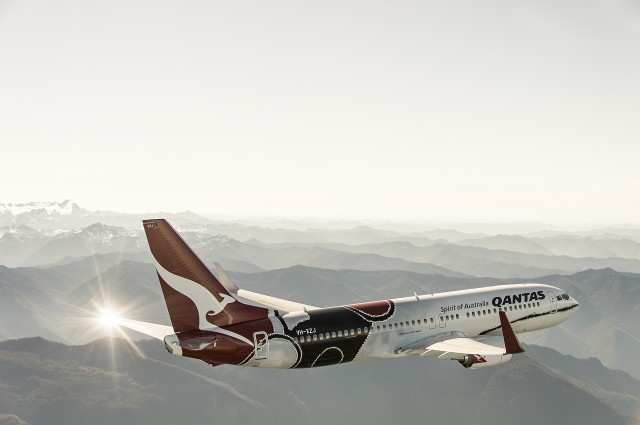
Qantas’s newest Flying Art livery ’œMendoowoorrji’ – Photo: Qantas
Qantas Airways recently took delivery of the fourth, and latest, aircraft in it’s Aboriginal ’œFlying Art’ livery after an unveiling in Seattle.
Qantas has long had a tradition of special liveries depicting numerous special events, but the ’œFlying Art’ series is iconic and unique to Qantas. Starting in 1993, to celebrate the International Year of Indigenous People, the first Qantas aircraft to get the special treatment was a 747-400 entitled ’œWunala Dreaming’.
For decades, military aircraft have blasted over the tops of stadiums during the national anthem. With sequestration and sweeping federal budget cuts, however, military flyovers have become a thing of the past for the time being. Last month in Kansas City, a group of private pilots took it upon themselves to preform what very well may be the largest formation flyover ever.
On Sunday, October 13th, 2013, 49 homemade Van’s RV aircraft entered a tight formation and synchronized their flyover to occur at the very end of the national anthem. Not only did these pilots pull of an amazing formation flight, but each plane left a pink smoke trail in honor of National Breast Cancer Awareness Month.
Tom McNerne, one of the flying pilots, posted video from his point of view on YouTube and detailed the difficulties of the extreme flyover. “I was flying, if you look close in the reflection you can see I am holding the chart and the stick in my left hand, throttle in my right hand. My wife was right seat keeping an eye on the other traffic. 2 helicopters and the blimp. The obstacle alert is from my Garmin Area 560. If you look at a sectional chart, there are TONS of towers around the stadium. It calls any obstacle even if you’re still above it. Some we were below, hence the urgency. A few towers are 2100 MSL if I remember.”




